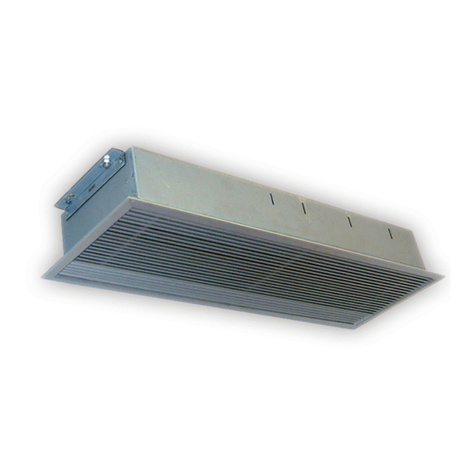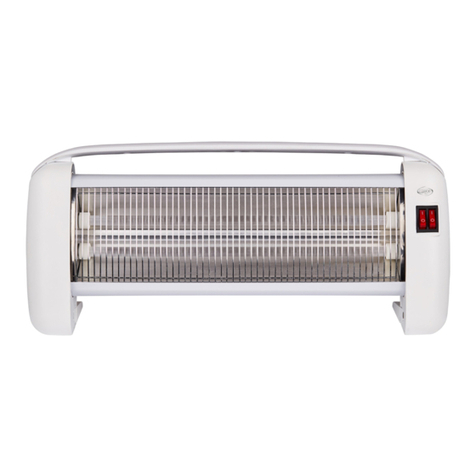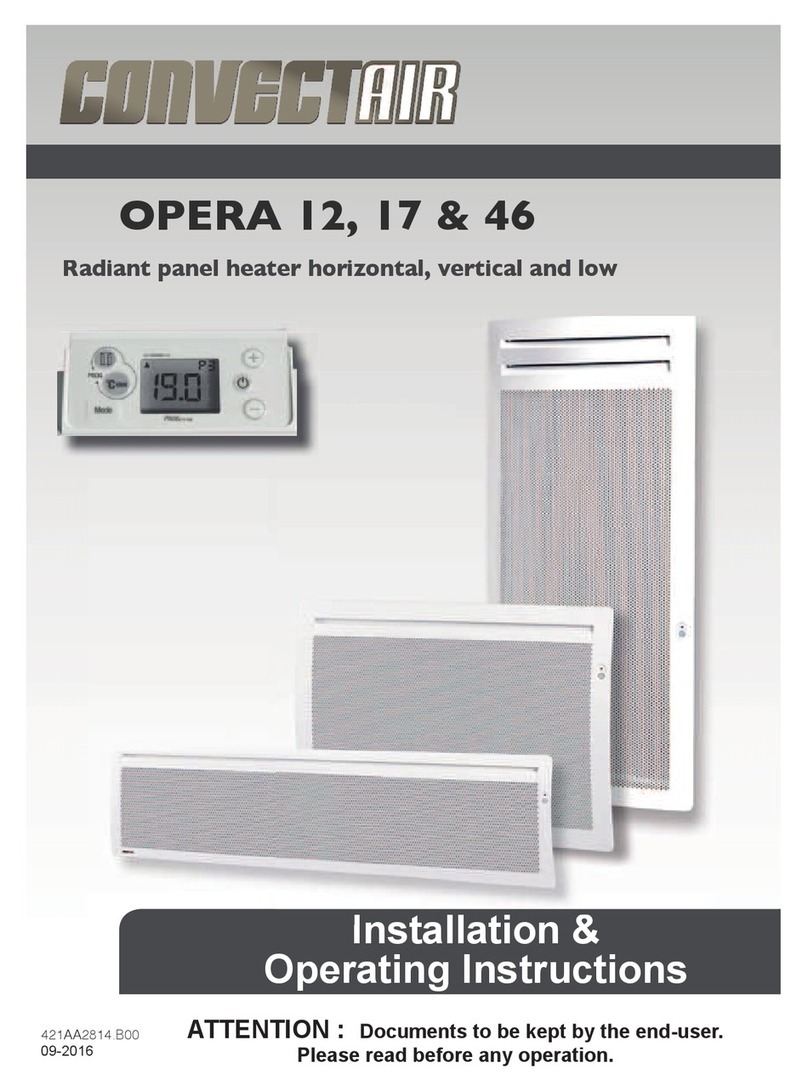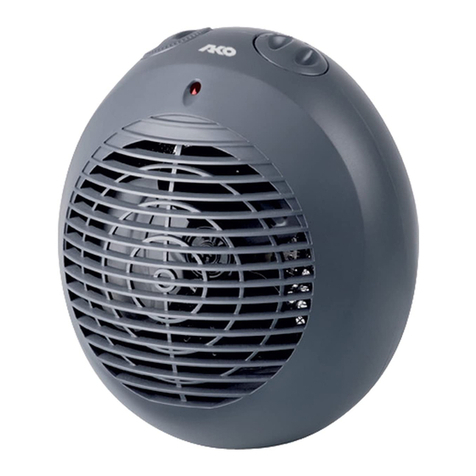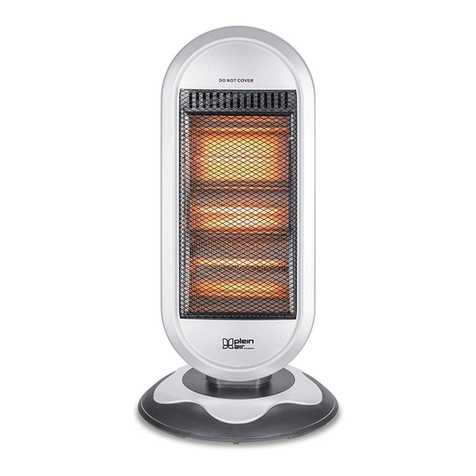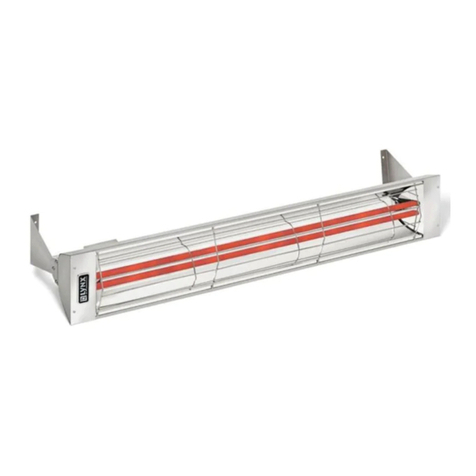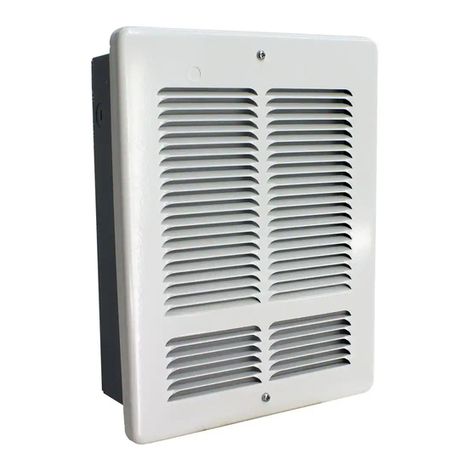Gildewerk Junior Dipping set User manual

DE 1
Instruction manual
The Gildewerk Junior is available in
the following configurations:
DMJ-0002F
Gildewerk Junior Dipping set
DMJ-0002B
Gildewerk Junior Colouring set
DMJ-0002E
Gildewerk Junior Duo set
DMJ-00008
Gildewerk Junior Base
This manual applies to all the above
configurations.
Product description
(All models)
Aluminium canisters are not suitable
for the processing of products that
contain stearine, such as marble wax,
moulding mix, etc.
The Gildewerk Junior Dipping Set
is intended for use in the dipping
of candles. This set consists of
the following components:
• Junior Base urn
• Dipping canister
• Dipping canister lid
• Condensing ring for dipping
canister
The Gildewerk Junior Colouring
Set is intended for use in the
colouring of candles. This set consists
of the following components:
• Junior Base urn
• 5 Colour canisters
• 5 Synthetic canister lids
• Condensing ring with 5 spaces
for the colour canisters
The Gildewerk Junior Duo Set
has larger canisters than the Junior
Colouring Set, allowing you to colour
thicker candles using the Duo.
This also makes it ideal for colouring
carved candles. It is also possible
to dip candles in the Duo. The set
consists of the following components:
• Junior Base urn
• 2 Dipping/colour canisters
• 2 Lids for dipping/colour canisters
• Condensation ring for dipping/
colour canisters
Most components are individually
available.
The Gildewerk Junior Base without
dipping- or colour canisters consists
of:
• Junior urn with element,
thermostat, safety cut-out and
cord.
The Gildewerk Junior urn heats wax
according to the safe ‘au bain marie’
method, which uses water. As
a result, the wax can never exceed
a temperature of 100 °C. The urn
is made of double-sided enamelled
sheet steel, while the lower casing is
made of an impact-resistant synthetic
material. The Junior is fitted with
a 1800 Watt/230-240 Volt element.
Its temperature is regulated by
a thermostat which is connected to
an indicator lamp. A cut-out switch
prevents overheating.
The Junior is equipped with an
insu lating coat made of heat-resistant
foam. The insulating coat keeps
the urn’s contents at the right
temperature for longer, reduces
the urn’s energy consumption by
+/- 35 % and increases the lifetime
of the thermostat. In addition,
the exterior of the urn is cooler to
the touch.
Installation
(all models)
1. Place the Junior in the desired
position without its accessories.
2. Fill the urn with approximately
15 cm of hot or cold water.
3. Place the aluminium condensation
lid on the urn.
4. Turn the thermostat dial to
the zero position and insert
the plug into an earthed socket
with an alternating current voltage
of at least 230/240 V and
a capacity of at least 10A.
5. The use of a timer is highly
recommended.
Please note!
• Only connect the machine to
an earthed 220-230 Volt socket
with a capacity of at least 10 A.
• Never turn on an empty urn.
Fill with water even when testing.
• Turn off the urn by removing
the plug from the socket.
©2010 Gildewerk NL
Subject to changes. The conditions held at
the county court in Haarlem apply to all services
and goods supplied by Gildewerk.
Read this instruction manual
carefully before using the
equipment. If you have any
questions, please contact
Gildewerk.
Gildewerk
Junior
GW1003HL-03
Gildewerk Junior Dippingset
Gildewerk Junior Colouring set
Gildewerk Junior Duo Set
www.gildewerk.com
The Netherlands
Gildewerk B.V.
A. Hofmansweg 41
NL-2031 BH Haarlem
T 31
–
(0)23
–
532 22 55
F 31
–
(0)23
–
534 09 65

Don’t turn it off by changing
the thermostat setting!
• When cleaning, do not immerse
the Combi in water!
• Never try to speed up the process
of melting wax, the filling of
the urn, or the heating of contents
by turning up the thermostat!
• Check the heating tray water level
every week and add water
if necessary.
• If present, check your timer’s
setting every week.
• Change the water in the heating
tray every three weeks. This will
prevent odours in the candle-
making area. Descale the tray
when you change the water.
• Note, in a logbook, all mainte-
nance-, monitoring- and cleaning
activities, mentioning the type,
by whom they were performed
on which date, the results and
further action to be taken.
Use of the Junior Dipping
Set
1. Fill the dipping canister to the
brim with paraffin granules. Place
the canister into the condensing
ring. Make sure that the water
level is just below the rim of
the canister.
2. Set the thermostat to 70 °C.
3. Paraffin has greater volume in
tablet form than in molten form.
Due to this, you should add
paraffin once or a number of
times, so that the colour canister
remains filled to its ribbed edge.
When doing this the first time,
the heating and refilling will take
around four hours. Never attempt
to accelerate this process by
turning up the thermostat!
4. For dipping purposes, paraffin
should have a temperature of
70 °C. Use a thermometer
to ensure that the temperature
corresponds to the thermostat
reading. You might have to adjust
the thermostat to just above
or just below 70 °C. Example:
if the paraffin’s actual temperature
is 65 °C, set the thermostat
to 75 °C. Check the temperature
again after an hour. Generally,
adjusting the thermostat by
a single measure is sufficient.
5. While you work, wax will spill
into the water in the heating tray.
Don’t remove this wax layer.
It slows down the evaporation
process.
6. Stir the dipping wax regularly
because the heavier ingredients
in the paraffin gradually sink to
the bottom of the canister. After
time, a kind of ‘layer’ will form
in the dipping canister because
of this. Stirring will delay this
process. However, you should
still empty and clean the dipping
canister and replace the dipping
wax three to four times per year.
7. After using the appliance, remove
the plug from the socket. Do not
leave the Junior turned on
constantly, or use a timer. This is
safer and more economical.
8. Check the urn’s water level every
week and add water if necessary.
9. In your logbook, note all
maintenance-, monitoring- and
cleaning activities mentioning
the type, by whom they were
performed on which date,
the results and further action to
be taken.
Use of the Junior Colouring
Set and the Junior Duo Set
1. Fill the dipping canister(s) to
the brim with the correct ratio of
wax and colour tablets (3 colour
tablets per 250 g paraffin). Write
the colour code on the exterior
of the canister and on the lid with
a felt-tipped pen (on a sticker
if desired).
2. Place the canisters in the Junior.
Make sure that the water level is
just below the condensation lid.
Add water if necessary.
3. Set the thermostat dial to
70-75 °C.
4. Paraffin has greater volume in
tablet form than in molten form.
Due to this, you should add
paraffin once or a number of
times, so that the canister remains
filled to its ribbed edge. When
doing this the first time, the
heating to 70-75 °C, filling and
refilling will take around thee
hours. Never attempt to
accelerate this process by turning
up the thermostat!
5. For colouring purposes, paraffin
should have a temperature of
70-75 °C. Use a thermometer to
ensure that the temperature of
the coloured wax corresponds to
the thermostat reading. You might
have to adjust the thermostat to
just above or just below 70-75 °C.
Example: if the paraffin’s actual
temperature is 65-70 °C, set
the thermostat to 75-80 °C.
Check the temperature again
after an hour. Generally, adjusting
the thermostat by a single
measure is sufficient.
6. Stir the melted colour wax evenly.
Molten colour wax must be
stirred regularly. It is very
important to do this just before
use. Use an up-and-down
pumping motion to prevent
a foam layer from forming on top
of the colour wax. Here, the
Gildewerk Combi mixing stick is
a useful aid. If foam still forms
on the colour wax, wait for it
to subside before you colour
candles.
7. While you work, wax will spill
into the water in the heating tray.
Don’t remove this wax layer.
It slows down the evaporation
process.
8. After using the appliance, remove
the plug from the socket.
Do not leave the Junior turned on
constantly. This considerably
shortens the urn’s useful life.
9. Check the urn’s water level before
use and add water if necessary.
10. Remove the water from the urn
when it is not in use. This will
increase the urn’s useful life.
Try to organise candle-making
activities in such a way that
colouring takes place every week
or every two weeks.
11. In your logbook, note all
maintenance-, monitoring- and
cleaning activities mentioning
the type, by whom they were
performed on which date,
the results and further action to
be taken.
Junior maintenance checks
(all models)
• Check the water level on a weekly
basis and add water if necessary.
• Every two months, refresh the
water in the urn, removing the
wax layer at the same time.
• Make sure that the enamelled
interior of the urn is intact.
• Make sure that the electrical cord
does not get crushed.
• Not all maintenance and cleaning
activities in your logbook.
• Do not place any flammable
materials close to the appliance.
These could include curtains, net
curtains and dried flowers.
Cleaning of Junior canister
1. Remove the hot, wax-filled
dipping canister from the urn.
2. Empty the dipping canister,
but leave behind a layer (1 cm)
of residue and sediment.
3. Use a filling knife to remove
the remaining warm, partly set
layer of wax.
EN 2

4. Place the empty dipping canister
back into the hot urn.
5. Clean the inside of the dipping
canister with absorbent paper
towel.
6. You could deep-clean the dipping
canister with paper towel and
turpentine, using soap and water
to remove the turpentine residue.
7. Now the dipping canister can be
refilled with paraffin granules.
8. Note all maintenance- and
cleaning activities in your logbook.
Cleaning of Junior colour
canister and Duo canister
1. Remove the hot, wax-filled colour
canister from the urn.
2. Empty the contents of the colour
canister into plastic duo bowls.
3. Place the colour canister into
the hot urn and fill it with hot
water and a splash of detergent.
Clean the canister with a toilet
brush.
4. Empty the colour canister
(not into a sink!) and rinse it with
water.
5. You could deep-clean the colour
canister with paper towel and
turpentine, using soap and water
to remove the turpentine residue.
6. Dry the inside of the colour
canister thoroughly using
absorbent paper towel.
7. Now the colour canister can be
refilled with colour wax.
8. Note all maintenance- and
cleaning activities in your logbook.
Cleaning of Junior Base urn
(without colour- or
dipping canister)
1. Unplug the Junior base urn and
let it cool completely.
2. Use a filling knife to remove
the layer of wax that has set in
the urn. Exercise care to avoid
damaging the enamel layer.
3. Scoop or pour the water out
of the urn.
4. Do not simply empty the urn into
a basin. The wax residue could
cause a blockage.
5. Use a synthetic pot cleaner to
clean the inside of the urn.
6. Make sure that there are
no cracks or peeling on the
enamelled interior.
7. Install the urn as described in
the “installation” section.
8. Note all maintenance- and
cleaning activities in your logbook.
Handy hint
• The old wax which remains after
the wax has been changed can
be used for making garden pot
candles, garden torches or floating
candles.
• Important when using the Junior
Dipping set
• If you spill water into the dipping-
or colour wax.
• This does not affect dipping or
colouring. Water is heavier than
paraffin and sinks to the bottom
of the canister. However, paraffin
oxidises sooner when it comes
into contact with water. Oxidised
paraffin has a light yellow to
ochre colour. The candles made
with this paraffin then also have
this colour. Sometimes, candles
dipped in oxidised paraffin are
also not perfectly shaped. You
might notice ridges on the points
of these candles. A candle made
from oxidised paraffin will also
emit an odour when lit. It is
therefore best to regularly clean
your dipping canisters.
• There is residue on the bottom
of the dipping canister.
• After regular use, a layer of
residue will form on the bottom
of a dipping canister. The residue
is heavier than the dipping wax
and sinks to the bottom of the
canister. This residue will blend
with the dipping wax during
mixing. It is therefore time to
clean the canister.
EN 3
Electrical devices must be
inspected regularly.
Electrical devices with heating are
subject to shrinking and stretching.
Annual maintenance is therefore
necessary

EC Declaration of
conformity
Manufacturer:
Gildewerk BV
Address:
A Hofmansweg 41
2031 BH Haarlem
The Netherlands
Hereby declares that,
DMj-0002F
Junior Dipping Set
DMJ-0002B
Junior Colouring Set
DMJ-0002E
Junior Duo Set
DMJ-00008
Junior Base
comply with the stipulations
found in the following EC
directives, these being the
most recently amended:
• EMC- directive 89/336/
EEG, 91/263/EEG, 92/31/
EEG and 93/68/EEG
• Low voltage directive
73/23/EEG und 93/68/EEG
and that the following
standards have been met:
• EN 55014 (1995)
• EN 55104 (1995)
• EN 61000-3-3 (1995)
• EN 60335
Finalised in Haarlem on 1
September 2010
M.L.J. Teunissen
Director
Gildewerk Junior
circuit diagram
S1 Regulating thermostat
30-114 °C
S2 Overheating protection 200
°C
L1 Indicator lamp
E1 Heating element 1800 W
˜
N
E1
L1
S1
2
1
S2
EN 4
This manual suits for next models
3
Popular Heater manuals by other brands
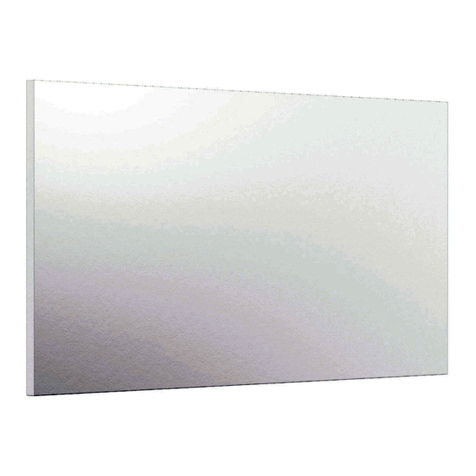
Etherma
Etherma HO-DUO-S325-W Assembly and operating instructions

bathstore
bathstore Optim Alpha Installation instruction
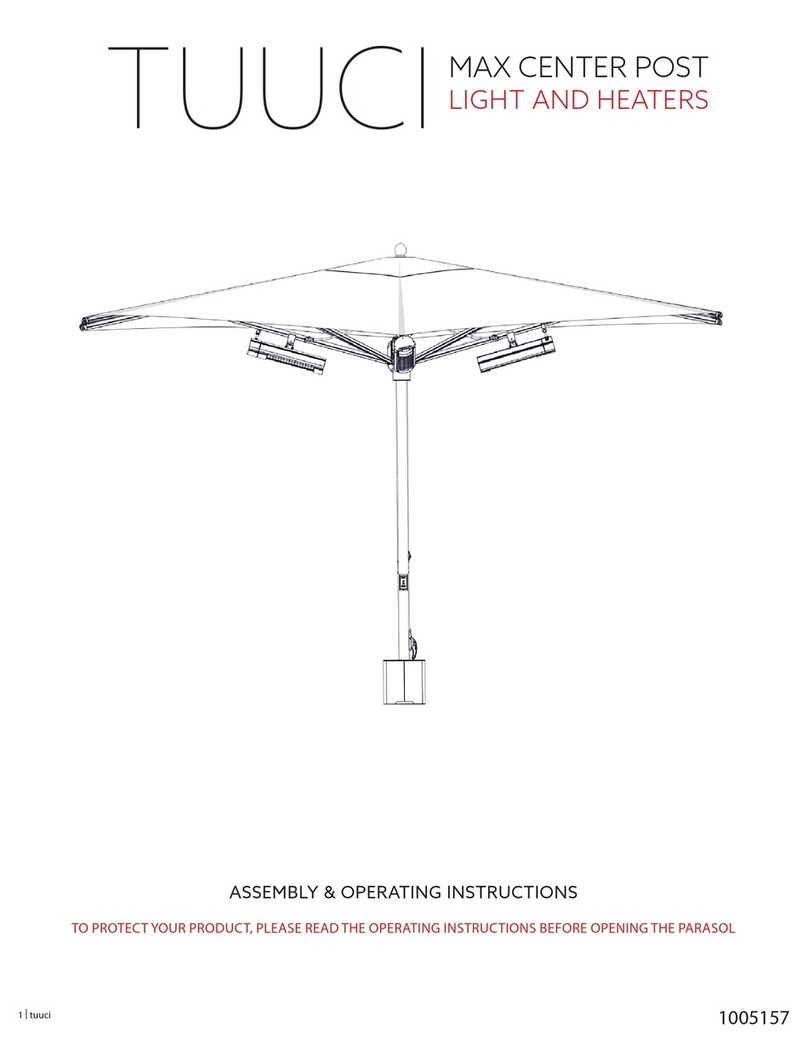
Tuuci
Tuuci MAX CENTER POST Assembly & operating instructions

DeLonghi
DeLonghi TRNS Series Instructions for use
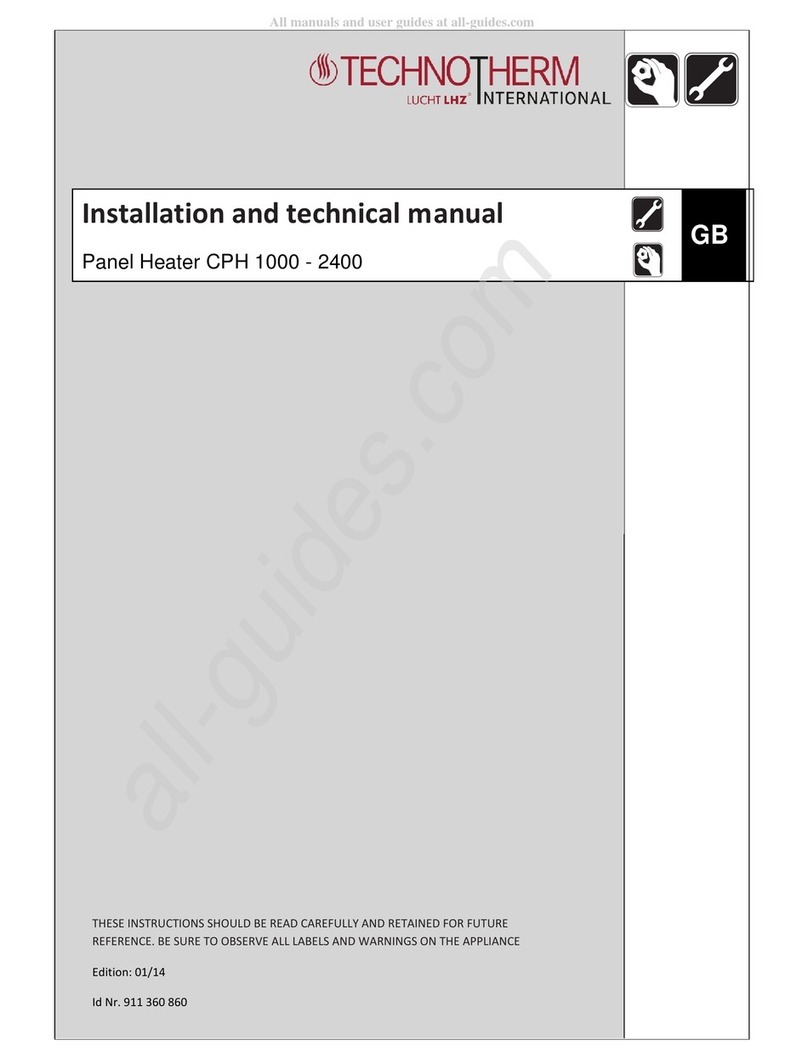
LUCHT LHZ
LUCHT LHZ Technotherm International CPH 1000 Installation and technical manual
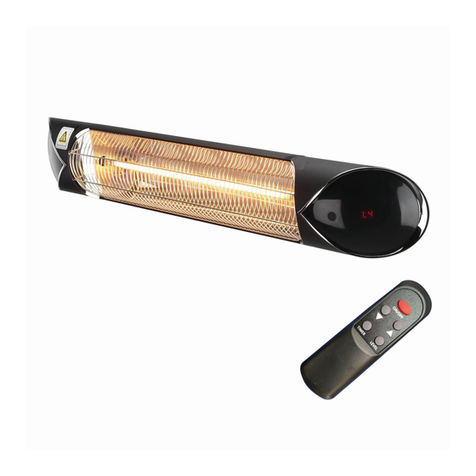
Sonnenkonig
Sonnenkonig MERKUR user manual
